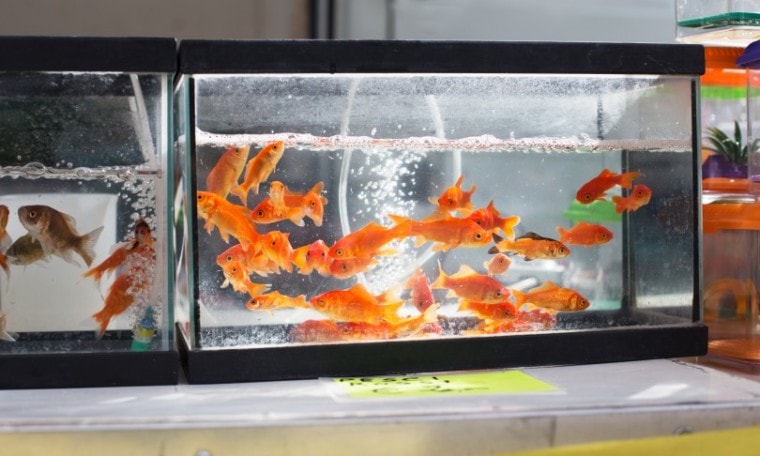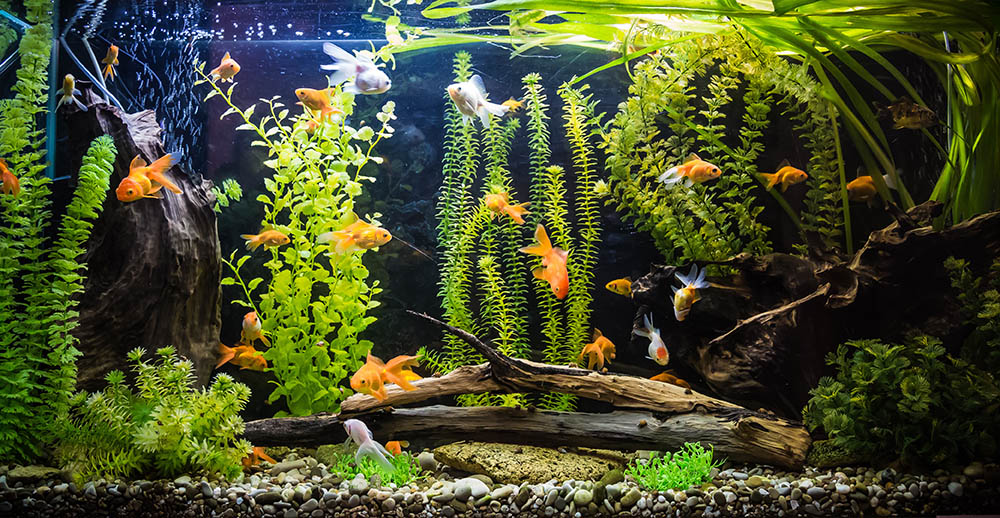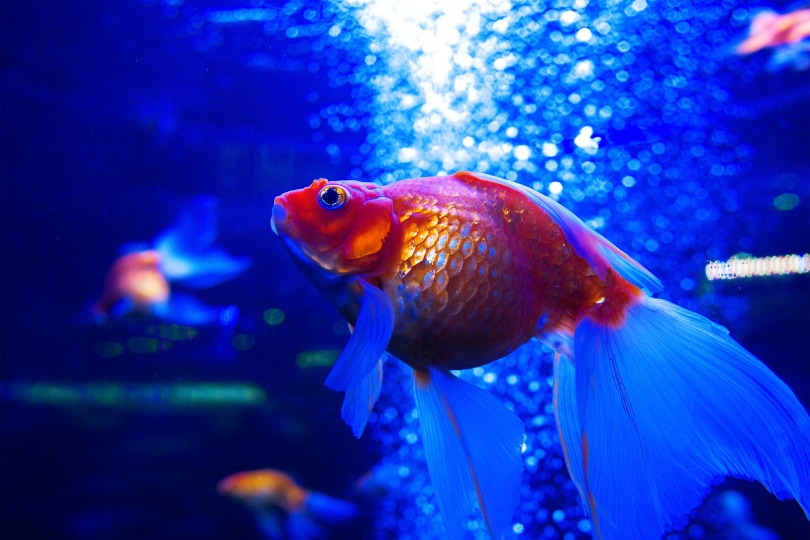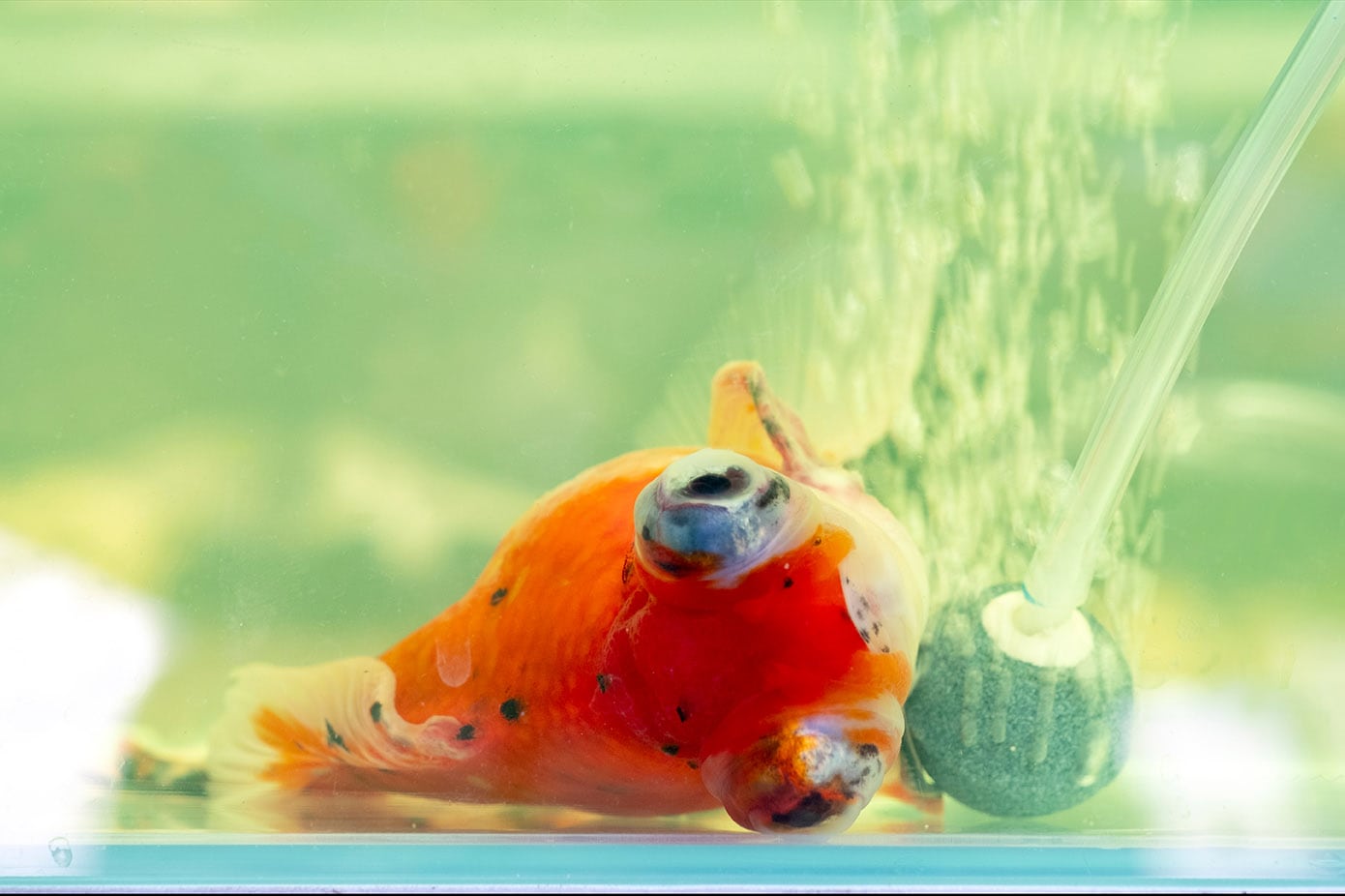
You’ve seen goldfish living in a bowl with no filter, air stone, or aeration. You may have even owned a goldfish that lived this way. Some goldfish live for decades in this this type of setup, which often leads to discussions not only around the ethics of keeping goldfish in a bowl, but of keeping goldfish in unfiltered environments. This may have left you wondering if goldfish actually need a filter. Here are the facts you need to know about goldfish and filters.
The Fiction
The belief that goldfish need a filter is incorrect. Goldfish don’t actually need filtration and can live long lives, as you may have seen, without filtration. The longest-lived goldfish, Tish, lived to 42 years old in a regular fishbowl. Your goldfish doesn’t need a filter, but keep reading, because there are still things you need to know about goldfish and water filtration.
You may be wondering how goldfish breathe without a filter or other source of aeration. How do they get oxygen in the water? Goldfish have a specialized organ called a labyrinth organ. The labyrinth organ functions in a way that is similar to a lung. It allows goldfish to breathe room air, which is why they can live for so long out of water. What this means for an unfiltered environment is that your goldfish can gulp air from the environment around the bowl, allowing it to breathe, even in low oxygen environments.

The Facts
Goldfish may not need filtration, but it’s a really, really good idea to give them high-quality filtration. Goldfish are heavy bioload producers, which means they create a lot of waste. These waste products build up in the water without filtration. What this means is that if you are keeping a goldfish in a 2-gallon bowl with no filter, then you need to be performing frequent water changes. Likely every day or two! If you aren’t performing frequent enough water changes, then waste products are building up in the water and can make your goldfish sick. The top cause of illness in goldfish is poor water quality.
It is not ok to keep a goldfish in an unfiltered tank or bowl and not perform regular water changes. You should be checking your water parameters weekly or more frequently so you know if your tank is retaining ammonia and nitrites, which can be dangerous to your goldfish. If you are checking your parameters multiple times per week, this can help guide you in determining how frequently you should be performing water changes.
Understanding the intricacies of water filtration can be tricky, so if you're a new or even experienced goldfish owner who wants a bit more detailed information on it, we recommend that you check out Amazon for the best-selling book, The Truth About Goldfish.
It covers all you need to know about creating the most ideal tank setup, goldfish care, and more!
Ideally, your goldfish should be kept in an environment with adequate filtration. Just because they can survive in an environment without filtration doesn’t necessarily mean they should. Keep in mind all of the things that could interfere with your ability to change the water in your goldfish’s environment. If you have a family emergency, go on vacation, get sick, have a baby, or many other life events, you may either forget or not be able to perform water changes at the frequency that would be kind to your goldfish.

Filtration Options
Regardless of the size or shape of tank or bowl your goldfish is living in, there is a filtration option that will help maintain water quality. The most important aspect of filtration is providing an environment that supports the development of beneficial bacteria. These bacteria require oxygen to live, so they will not colonize in an environment without filtration or aeration. Beneficial bacteria are a necessary part of the nitrogen cycle, which converts dangerous ammonia and nitrite to nitrate, which is less dangerous and more easily managed. If you are not supporting colonization of beneficial bacteria, then you are risking an environment with waste product build up and nothing to relieve it except the reliance on you to perform water changes.
In Conclusion
While it isn’t necessary to provide filtration for your goldfish, it is usually the kindest option. Some goldfish enjoy playing in the currents and bubbles produced by filters, so this can provide enrichment on top of improving the quality of the water and environment as a whole. Maintaining your water quality can be difficult without a good filtration system. Poor water quality can lead to illness and even death for your goldfish. There are lots of great options on the market for filtration for a goldfish, even if the environment is small. Investing in proper filtration will help keep your goldfish healthy and happy for years to come.
You May Also Like: Goldfish Care Guide for Beginners: 11 Essential Steps
Featured Image Credit: Zinaida Zakharova, Shutterstock










